Spring City Foundry
Introduction
Text-to-speech Audio
Established in 1913, Spring City Foundry operated unti l 1982. Spring City Foundry produced gray-iron, primarily creating parts for the nearby Waukesha Motor Company. In 1927 William J. Grede purchased the foundry from its then president, Henry E. Blair. Grede instituted benefits for his employees, and many of them stayed long enough to be part of the Quarter Century Club.
Images
Spring City Foundry
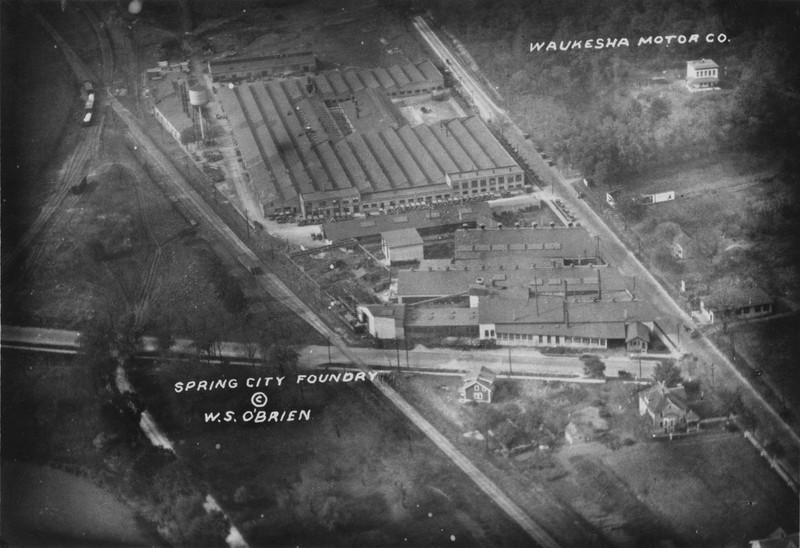
Workers at the Spring City Foundry
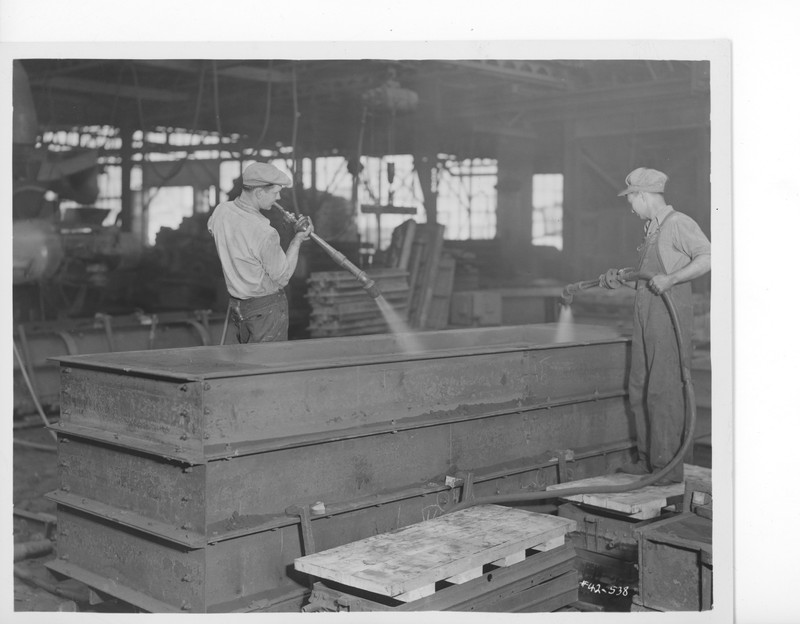
Spring City Foundry
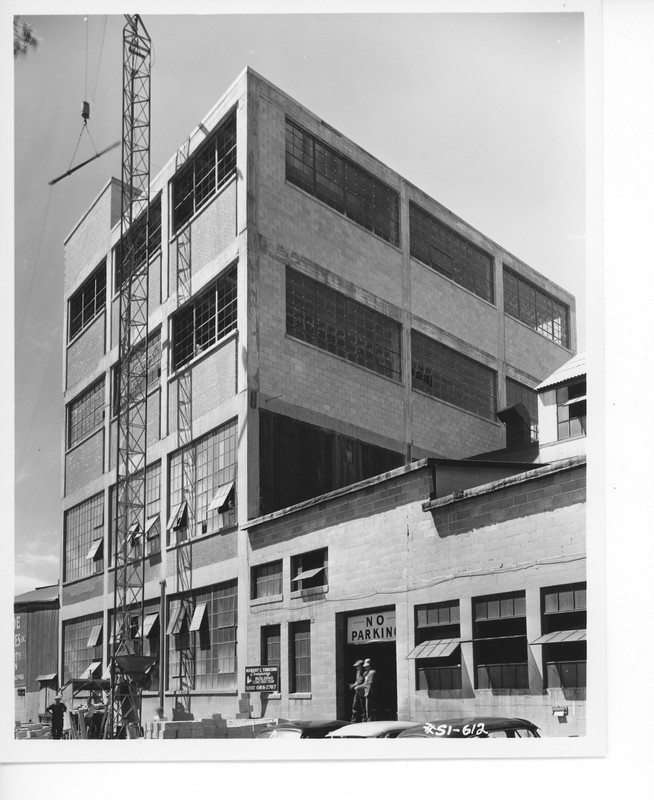
Inside the Spring City Foundry
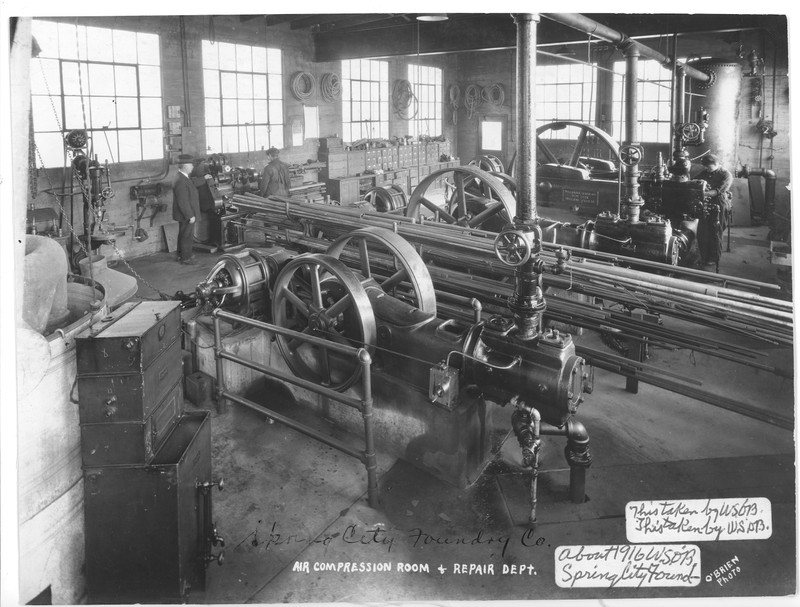
Spring City Foundry on the 1922 Sanborn map
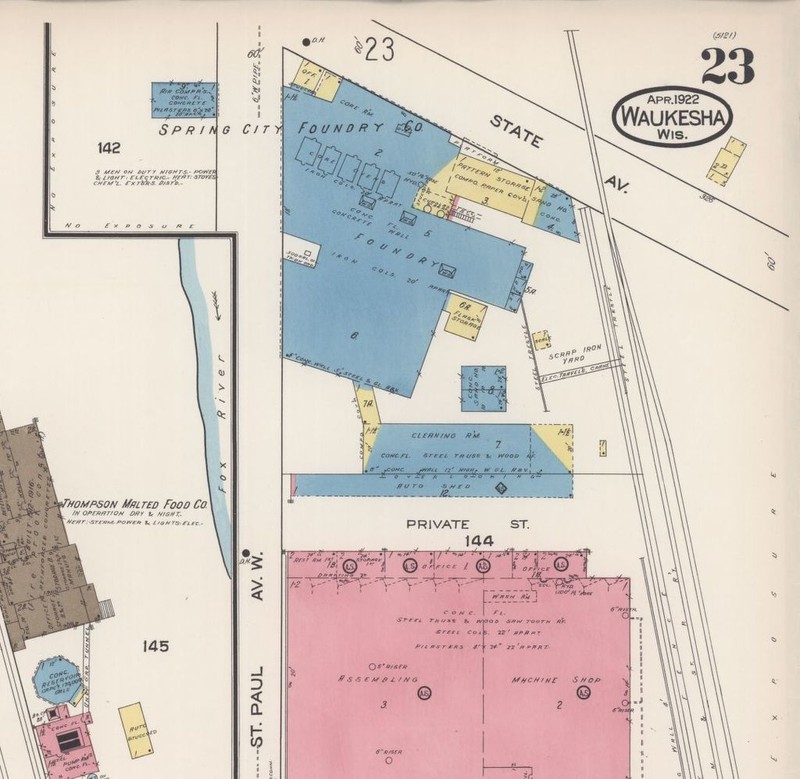
Backstory and Context
Text-to-speech Audio
Caspar Reichel founded Spring City Foundry in 1913, originally with 20 employees. In 1914 Reichel realized he required additional investment, and Henry E. Blair became one of the stakeholders, as well as president. Blair himself was a former Waukesha mayor, and well respected in the community. In 1927 William J. Grede bought the foundry, already owning the Liberty Foundry in Wauwatosa.
In 1924 the Spring City Foundry began offering group insurance to employees, and in 1926 paid vacation was added. This was unusual for the time, as group insurance and time off didn't generally gain traction in the United States until the 1940's and the Great Depression. These offerings were not purely selfless, however. According to a 1970 Freeman article, Grede offered fair treatment in an attempt to keep workers from unionizing.[1] In addition, offering insurance and vacation time kept employees for longer. Some employees stayed at the company for more than 25 years, giving rise to the term "the Quarter Century Club."
The Spring City Foundry primarily produced motor parts, originally established to produce parts for the Waukesha Motor Company. By the 1940's its products were in high demand. During WWII, the foundry produced parts for the B-29 planes, as well as military trucks, coast patrol boats, and navy equipment.
In 1973 Grede retired, passing on the executive leadership to Burleigh E. Jacobs Jr. Soon afterwards, in 1981, the company announced that Grede foundries would be investing four million dollars into doubling their capacity. However, only a year later this plan fell through and leadership unexpectedly announced that the company would be closing due to recession. Many of the workers blamed poor leadership and the rising global economy for the plant's closing. In 1994 the foundry was finally demolished, making way for additional parking space.
Throughout its lengthy history, the Spring City Foundry employed a great number of Waukesha workers, and led the way in their fair treatment. A number of workers became part of the Quarter Century Club, and the foundry remains a major part of Waukesha history.
Sources
[1] "Grede Reflects on 50 Years." The Milwaukee Journal (Milwaukee) May 31st, 1970.
Arablouei, Ramtin and Rund Abdelfatah. History of Employer-Based Health Insurance in the U.S., NPR. October 7th, 2020. Accessed August 24th, 2022. https://www.npr.org/2020/10/07/921287295/history-of-employer-based-health-insurance-in-the-u-s.
"Castings of Grede Firm Widely Used." The Waukesha Freeman (Waukesha) October 31st, 1947. 8.
"Former Foundry Being Demolished." The Milwaukee Journal (Milwaukee) June 28th, 1994.
"Grede Foundry Marks 20th Anniversary Here on Friday." The Waukesha Freeman (Waukesha) July 17th, 1947. 6.
"Grede Foundry Started in 1920." Hutchinson News (Hutchinson) March 5th, 1978. 37.
"Grede of Foundries Fame Retires." The Waukesha Freeman (Waukesha) June 12th, 1973.
"Grede to Double Capacity of Foundry." The Waukesha Freeman (Waukesha) October 13th, 1981.
Miller, Gary and Brad Zweck. "Grede Closing Spring City Foundry." The Waukesha Freeman (Waukesha) 1982.
"Name W. J. Grede President of NAM." The Waukesha Freeman (Waukesha) December 6th, 1957.
"Spring City Foundry, One of Waukesha's Active Industries." The Waukesha Freeman (Waukesha) May 3rd, 1917.
Zweck, Brad. "Grede Workers Consider New Lives." The Waukesha Freeman (Waukesha) May 27th, 1982.
UW Madison Libraries
WCHSM Archives
WCHSM Archives
WCHSM Archives
Library of Congress
